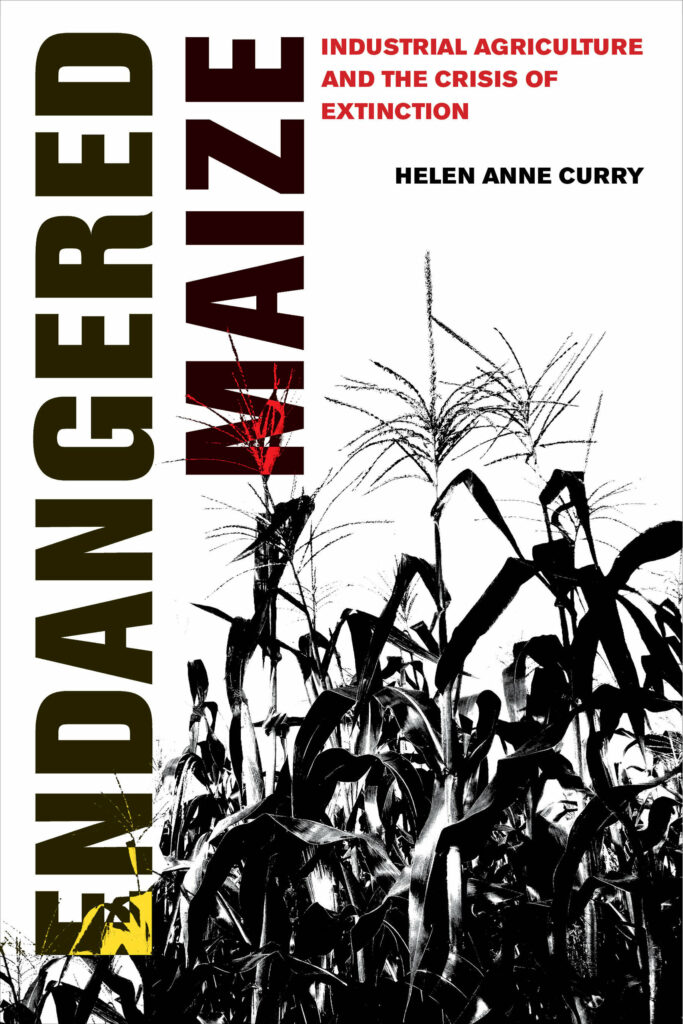
Industrial Agriculture and the Crisis of Extinction”
By Helen Anne Curry
University of California Press, 2022
336 pages, paperback, $29.95
Corn isn’t typically considered a charismatic crop. For many, it invokes images of Midwestern monoculture, starchy syrups and corn on the cob.
As “Endangered Maize” establishes, though, the efforts to preserve the biodiversity of corn over the last two centuries tells a familiar story about modern agriculture: crop diversity has shrunk in the face of colonialism, capitalism and industrialization, while efforts to “save” rare Indigenous genetic lines of the crop often ignore — or come at the expense of — the people who have stewarded them. Despite detailing how past preservation projects failed to safeguard against biodiversity loss, author Helen Anne Curry finds a way to steer her narrative toward pragmatic optimism for the future of corn — and farming in general.
Perhaps conscious of corn’s bland public perception, Curry starts “Endangered Maize” by telling readers why they should care about corn (Zea mays), which makes up 20% of the globe’s caloric intake. She then traces the history of corn from the earliest stages of American agriculture through the present day, which can be overwhelming for the reader, even though the information is presented with clarity and elegance.
Curry is fair but unsparing in criticizing the historical attempts to preserve the biodiversity of corn. For example, she details the journey of early American preservationists attempting to hunt down supposedly untouched “primitive” or “native” strains of corn, only to find that Indigenous growers were continually adapting such strains to local growing conditions. As a result, much of the work done by these American scientists was at best unnecessary and, at worst, actively harmful.
The book isn’t all historical foibles, though. Curry also highlights examples of preserving maize biodiversity gone right. For example, she details the successes, starting in the 1980s, of the Seed Savers Exchange and Heirloom Seed Bank involving Indigenous farmers and creating practical models for participatory plant breeding and seed bank facilities that were functional, manageable and a benefit to their communities. Curry also shows how the mistakes of the past make it difficult or impossible for well-intentioned efforts to work everywhere: in Mexico in the 1990s, the similarly structured Project Sierra de Santa Marta was negatively impacted by existing policies that made the burden of participatory breeding too much for farmers to bear.
Curry does not fundamentally rebuke the commitment to preserving biodiversity. Indeed, “Endangered Maize” outlines many reasons why encouraging crop biodiversity is important for both cultural and practical reasons, such as ensuring disease resistance through genetic variation. The text forces readers to reckon with the often morally gray motivations for the pursuit, positioning itself as the basis for a future template on how to approach this noble goal while offering insight on who should be involved and valued in the process. Curry is certain that taking Indigenous seed stewards out of the equation will always lead to failure.
Curry’s narrative is neatly tied together with the final example of Glass Gem corn, which achieved viral social media attention in the late 2010s for its colorful, Instagrammable kernels. Though many people who shared, liked and commented on Glass Gem held it up as an example of why traditional lines are worth preserving, the variety is actually a modern one, developed and cultivated by a part-Cherokee Oklahoman farmer over many years of experimentation in the late 20th and early 21st century. For Curry, Glass Gem’s roots make it all the more perfect in illustrating what a more diverse and inclusive modern agricultural system can achieve.
Sam Schipani, Bangor, Maine
